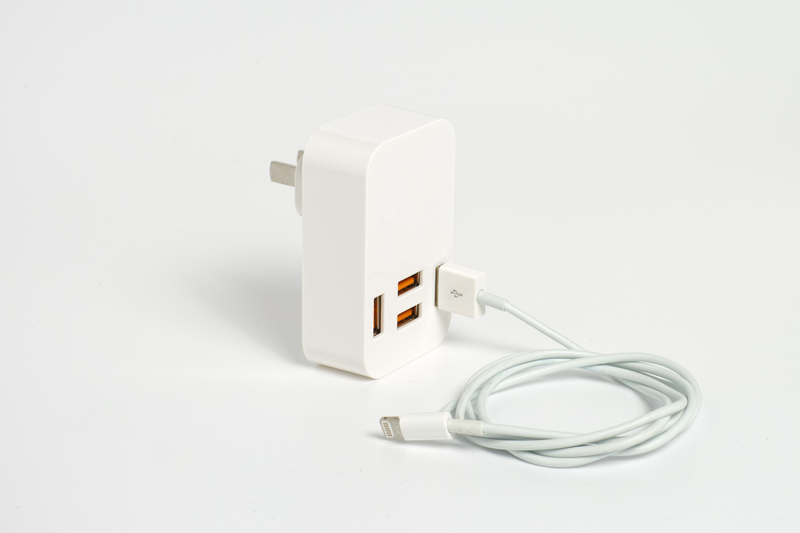How to Move Your Bed Frame and Mattress with Ease
Moving your bed frame and mattress can seem daunting--after all, they are some of the largest, bulkiest items in your home. Whether you're relocating to a new apartment across town, upgrading your bedroom, or simply rearranging your space, efficient and safe bed moving techniques are vital. This comprehensive guide will walk you through how to move your bed frame and mattress with ease, ensuring both your furniture and back remain in good shape throughout the process.
Why Moving Your Bed Properly Matters
Your bed is where you spend about a third of your life. A well-handled move ensures that your investment in good sleep isn't compromised by rips, dents, or lingering odors. Furthermore, transporting a bed incorrectly can result in physical injuries or property damage, adding unnecessary costs and headaches to your move.
- Protect Your Investment - Mattresses and bed frames are expensive. Avoiding tears, stains, or broken slats is a top priority.
- Prevent Injuries - Mattresses and bed frames can be awkward and heavy; safe lifting techniques protect your back and joints.
- Ease of Reassembly - Careful disassembly and tracking of small parts makes rebuilding your bed effortless at your new location.

What You'll Need for a Successful Bed Move
Preparation is key to easy mattress and bed frame moving. Gather the tools and supplies listed below before you begin:
- Mattress bag or plastic wrap - Protects your mattress from tears, dirt, and moisture.
- Moving blankets - Shields your bed frame from scratches during transport.
- Tool kit - Includes screwdrivers, Allen wrenches, pliers, and anything your bed's bolts or connectors require.
- Tie-down straps or rope - Used to secure loose items and keep mattress from shifting.
- Furniture sliders or dolly - Reduces physical strain and prevents floor damage.
- Plastic bags and labels - Store and identify all screws, nuts, and bolts.
- Helper or moving partner - Essential for maneuvering large or heavy items safely.
Step-by-Step: How to Move Your Mattress with Ease
1. Strip the Bed
Remove all bedding, pillows, and accessories. Launder linens before packing or place them in a clearly labeled box.
2. Clean and Inspect
Vacuum both sides of your mattress to remove dust and allergens. Check for existing stains or damage and address them before packing. A clean mattress is a fresh start in your new space.
3. Bag the Mattress
Slip your mattress into a dedicated mattress bag (available at moving supply or home improvement stores). If you don't have a bag, a layer of heavy-duty plastic wrap can act as a substitute. Secure the bag or plastic with tape, but avoid taping directly to the mattress fabric.
4. Plan the Route
How to move your mattress quickly and safely begins with planning your exit. Walk the route from bedroom to vehicle, clearing all obstacles and propping open doors. Take special care with tight corners, stairwells, and hallways.
5. Enlist Help
Maneuvering a mattress by yourself can be awkward and even dangerous. For a queen, king, or any thick mattress, have at least one helper, especially when using stairs.
6. Moving the Mattress
- Stand the mattress up on its side (not flat). This makes it easier to grip and steer through narrow spaces.
- Use lifting straps or a dolly for larger mattresses.
- If moving alone, create a "handle" by looping a rope or tie-down beneath the mattress, forming two easy-to-grab ends.
For transport, never fold or bend a mattress, especially memory foam or innerspring models, as this may damage the support structure. Instead, carry it upright and strap it securely inside your moving vehicle.
How to Move Your Bed Frame Effortlessly
1. Disassemble the Bed Frame
Take pictures of your bed frame before disassembly, focusing on joints and any complex connectors. This makes reassembly straightforward. Follow your manufacturer's manual if you still have it.
- Remove slats, headboard, footboard, and center supports in order, placing all connecting bolts and hardware in labeled plastic bags per piece.
- For platform or adjustable beds, unplug any cords or power sources safely and wrap them separately.
2. Protect Your Bed Components
Wrap each part of your bed frame--headboard, footboard, and side rails--in moving blankets. Fix the blankets with tape or shrink wrap to prevent scratching during loading and transport.
3. Move the Frame
- Carry lighter parts by hand, watching for sharp corners.
- For larger pieces, especially heavy wooden or upholstered frames, use a dolly or sliders to ease movement over floors and avoid damage.
- In tight stairways or hallways, move longer frame components vertically, taking care not to scrape walls or ceilings.
4. Loading for Transportation
When moving your bed frame and mattress in a truck or van:
- Load the mattress last, lying it flat if possible on top of all other items, or upright against a wall if required by space.
- Place frame parts close together and secure with straps to reduce shifting.
- Never stack heavy objects on top of your mattress or bed frame components.
Tips for Reassembling Your Bed Frame and Mattress
- Unpack carefully - Remove all protective wraps and let the mattress air out for a few hours before making the bed.
- Sort and identify hardware - Use your labeled bags and the photos you took earlier as a guide to match each piece to its proper location.
- Rebuild the frame - Assemble the main structure first (side rails attached to headboard and footboard), then reinstall slats or center supports.
- Check for stability - Ensure all bolts are tight and the frame is level before placing your mattress on top.
- Position your mattress - Place your mattress evenly and make up your bed with clean linens for a comfortable first night.
Professional Help: Should You Hire a Moving Company?
If you're short on time, have mobility limitations, or need to move your bed frame and mattress long distances (especially up/downstairs), hiring professional movers may be the best solution. Experienced movers have specialized equipment, vehicles, and techniques to transport large furniture items safely and efficiently. Get quotes from a few local providers and confirm that they're insured--this protects both your belongings and peace of mind.
What to Look for in a Bed & Mattress Moving Company
- Experience with large furniture
- Proper equipment and packing materials
- Positive customer reviews
- Clear pricing with no hidden fees
- Insurance covering damage or loss
Moving a Bed Frame and Mattress: Storage Solutions
If your new home isn't quite ready or you're staging your current house for sale, you might need to store your bed for a period of time. Here's how to prepare your mattress and bed frame for storage:
- Choose climate-controlled storage to prevent mold and moisture damage.
- Keep mattress flat whenever possible and on top of other items, not upright, to maintain its shape.
- Store all hardware in a labeled bag taped to the frame.
- Keep parts covered with moving blankets to protect against dust and dings.
Common Mistakes When Moving a Bed--And How to Avoid Them
- Not measuring doorways and stairwells. Always confirm your mattress and bed frame can fit through all passageways before starting the move.
- Skimping on protection. Invest in quality covers and padding for both mattress and frame.
- Forgetting hardware or connectors. Label everything and keep small parts together. A missing screw can derail your move-in day.
- Moving a mattress flat by yourself. Large mattresses can flop and get damaged--use team lifts or specialized tools instead.
- Improper loading in truck. Secure your bed with straps and don't let heavy boxes sit on top of mattresses or delicate bed components.

Frequently Asked Questions About Moving Mattresses and Bed Frames
How do I move a king-size mattress by myself?
While moving a king-size mattress alone isn't recommended due to its size and weight, if you must, use a mattress sling or straps with handles, stand the mattress on its side, and slide it gently. Protect the fabric with a mattress bag and avoid bending it sharply.
What's the best way to move an adjustable bed?
For adjustable bases, unplug and organize all cords. Disassemble the frame per the manufacturer's instructions. Consider hiring professionals if the unit is especially heavy or complex.
Can I transport a mattress on my car roof?
While sometimes done, transporting a mattress on a car roof is not recommended. Mattresses can catch wind easily and become a road hazard. If you must, use strong tie-downs and drive slowly, but it's far safer to use a pickup truck, van, or moving company vehicle.
How should I clean my mattress before moving?
Vacuum thoroughly on both sides, spot clean stains, and allow to dry completely before bagging. Do not move a damp or wet mattress--it can develop mold during transit or storage.
How do I move a heavy wooden or metal bed frame?
Disassemble as much as possible. Use a dolly for long or heavy pieces and always protect edges with blankets or padding. Team lifts are safest for oversized furniture.
Final Thoughts on Relocating Your Bed Easily
Whether you're DIY-ing or hiring pros, moving a mattress and bed frame doesn't have to be stressful. With the right preparation, tools, and help, you can protect your belongings and your body from damage. Plan ahead, label hardware, clear paths, and invest in proper protection for your mattress and frame. This way, you'll be enjoying restful sleep in your new space in no time, without aches, pains, or missing screws.
Key Takeaways:
- Disassemble bed frames fully and track all small hardware parts.
- Use mattress bags and moving blankets for maximum protection.
- Clear hallways and recruit helpers for safe, efficient movement.
- Always lift with your legs, use dollies when needed, and avoid straining your back.
- Consider professional movers for complex jobs or heavy items.
With these comprehensive tips, moving your bed frame and mattress effortlessly is entirely possible. Sweet dreams in your new home!



